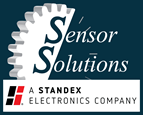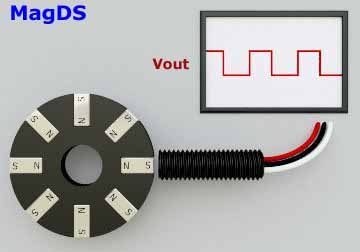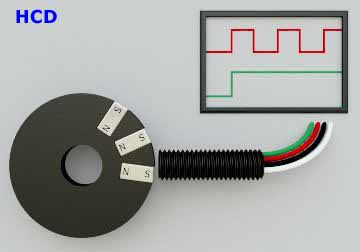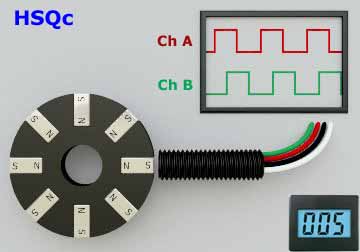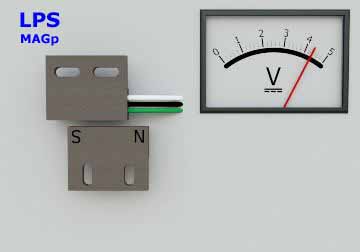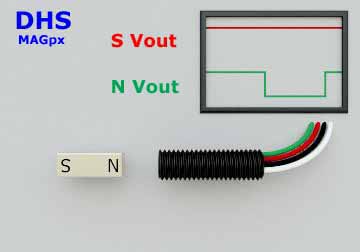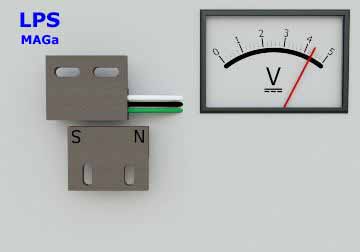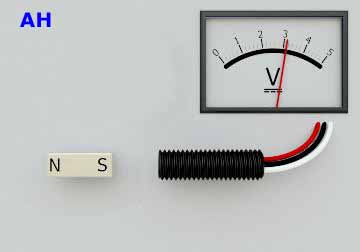By attaching one or more magnets to a target, it is possible to detect speed, count events, track a position, proximity or confirm alignment using a magnetic sensor. Magnetic sensors available include Hall Effect switches, Hall Effect latches, magnetoresistive sensors, and Reed switches.
There were no results for "".
If you are searching for a part number from a sensor engraving, you may be including a date code, gear pitch, or programming code.
Try searching again without any characters after an "_" or a blank space on the markings.
You may also find the product or information you need on one of the below pages:
For immediate assistance, please call us at: 970-879-9900.
- Home
- >
- Sensors by Target
- >
- Magnets
Magnets
Digital Switching Magnetic Sensors
Sensor Solutions offers a wide variety of digital switching sensors for the detection magnets for applications to track a speed, count, position, alignment, or confirm proximity.
- Hall Effect Switches and Magnetoresistive sensors provide a single digital switching output (or relay output) that turns on when a magnetic field is present and then off when the magnetic field leaves. When paired with magnets these sensors can be used to measure speed or count or to confirm a position or alignment between the sensor and target magnet.
- Hall Effect Latches provide a single digital switching output that turns on when a South Pole Magnetic field is present. The output remains on until a North Pole field is detected. The latching output is useful in creating a 50% duty cycle when detecting alternating North and South Poles in Multi-pole magnet tape and magnet wheels.
- Dual Output Hall Effect Switches combine a South Pole Hall Switch and a North Pole Hall Switch into a single sensor with two outputs. These sensors are frequently used in applications where multiple magnets are present with one pole for measuring speed of a rotating target and then one opposite pole magnet is used to index a specific location in the rotation or to provide a once per rotation count.
- Quadrature Magnet Sensors provide two digital pulsing outputs. The sensing elements are placed side by side so that when a magnet passes in one direction Channel A will switch first and when the magnet passes in the opposite direction Channel B will switch first. By comparing the outputs a tachometer or controller can monitor the speed and direction of movement, or perform directional counting.
- Speed and Direction Magnet Sensors provide one digital pulsing output and a high/low direction output. When connected to a tachometer or controller these sensors can monitor the speed and direction of movement, or perform directional counting.
- Speed Switch Sensors provide one digital pulsing speed output and a high/low or open/close speed switch output that turns on/off dependent on whether the speed is above or below the defined frequency.
Analog Magnetic Sensors
Sensor Solutions offers a wide variety of analog output Hall Effect sensors for detecting the proximity, position, or alignment of a magnet relative to the sensor.
- Analog Hall Sensors provide a single analog output that increases or decreases dependent on the size and pole of the magnetic field at the face of the sensor.
- Linear Position Sensing Systems combine a sensor and a specially designed target magnet to provide an analog output that changes based on the alignment of the sensor and the target magnet.
- Angular Position Sensors provide a single analog output that increases or decreases dependent on the rotation of an Angle Position Magnet.
- Magnetic Tape Tracking Sensors provide a combination of analog and digital outputs to provide feedback to automated guided vehicles to keep them centered over magnetic tape
Passive Magnetic Sensors
Reed switches are normally open or normally closed switches that close or open when a magnetic field is present. As they are mechanical switches they are not recommended for high switching frequency applications, but they are low cost easy to use sensors in proximity detection applications.
To learn more about our sensors, magnets, and expected operate gap ranges for our sensors when paired with our magnets refer to our Application Notes for more information.
A large variety of target magnet options are available in our accessory catalog.
If you do not find the magnetic sensor you need in our catalog, contact our engineers to discuss a custom solution.
